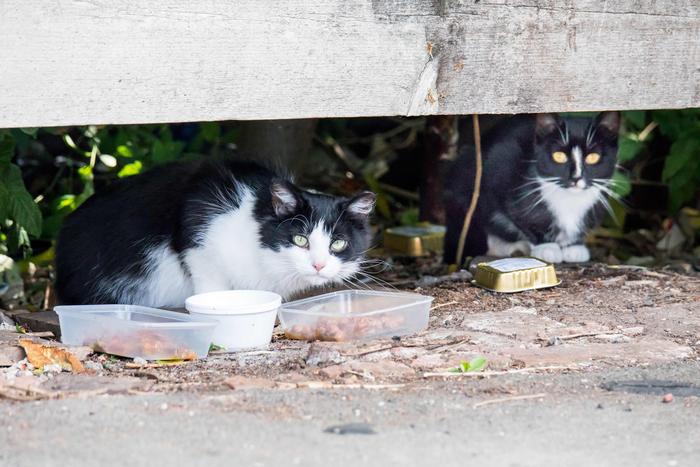A new mathematical model of UK cat populations suggests that neutering of cats that belong to people not only affects the population dynamics of owned cats, but also affects feral, stray, and shelter subpopulations. Jenni McDonald of Cats Protection and co-authors present these findings in the open-access journal PLOS ONE on July 12.

Credit: Ciaran McCrickard/Cats Protection, CC-BY 4.0 (https://creativecommons.org/licenses/by/4.0/)
A new mathematical model of UK cat populations suggests that neutering of cats that belong to people not only affects the population dynamics of owned cats, but also affects feral, stray, and shelter subpopulations. Jenni McDonald of Cats Protection and co-authors present these findings in the open-access journal PLOS ONE on July 12.
More than ten million cats live as owned pets in UK homes, and hundreds of thousands of additional cats live in shelters or as free-roaming feral or stray cats. Cats may transition from any of these subpopulations to another. However, while many prior studies have investigated cat population dynamics, few have accounted for the connectivity between subpopulations, limiting understanding of how certain factors—such as neutering—within a specific subpopulation might also affect other subpopulations.
To help address that gap, McDonald and co-authors developed a mathematical model of cat population dynamics in the UK that includes all four subpopulations. It draws on real-world data to set parameters relating to several different factors, such as survival rates, fertility rates, seasonal breeding patterns, and rates of transitions between subpopulations. The researchers then used the model to simulate how neutering of female cats, as well as changes in other factors, might affect cat population dynamics.
In the simulations, neutering of female owned cats significantly influenced all subpopulations. Lower rates of neutering of female owned cats led to population booms within the other subpopulations, especially for stray cats. The simulations also showed that, even if neutering rates remain the same, neutering female owned cats at a younger age could decrease population growth rates for all subpopulations.
In the simulations, the factors with the greatest influence on overall cat population growth rate were survival and fertility rates of owned cats. Among the subpopulations, stray cats had the second-highest influence, followed by feral cats, and shelter cats had the least influence.
These findings underscore the importance of considering the interlinked nature of cat subpopulations and could help inform population management efforts. The researchers note that the availability of additional real-world cat data would help improve the accuracy of their model.
The authors add: “We previously had little robust understanding of just how important the links between cat subpopulations are. Our study shows that connectivity between cat subpopulations can have a big influence on population dynamics.”
#####
In your coverage please use this URL to provide access to the freely available article in PLOS ONE: https://journals.plos.org/plosone/article?id=10.1371/journal.pone.0287841
Citation: McDonald J, Finka L, Foreman-Worsley R, Skillings E, Hodgson D (2023) : Empirical modelling of Felis catus population dynamics in the UK. PLoS ONE 18(7): e0287841. https://doi.org/10.1371/journal.pone.0287841
Author Countries: UK
Funding: The authors received no specific funding for this work.
Journal
PLoS ONE
DOI
10.1371/journal.pone.0287841
Method of Research
Computational simulation/modeling
Subject of Research
Not applicable
Article Title
Cat: Empirical modelling of Felis catus population dynamics in the UK
Article Publication Date
12-Jul-2023
COI Statement
The authors have declared that no competing interests exist.




